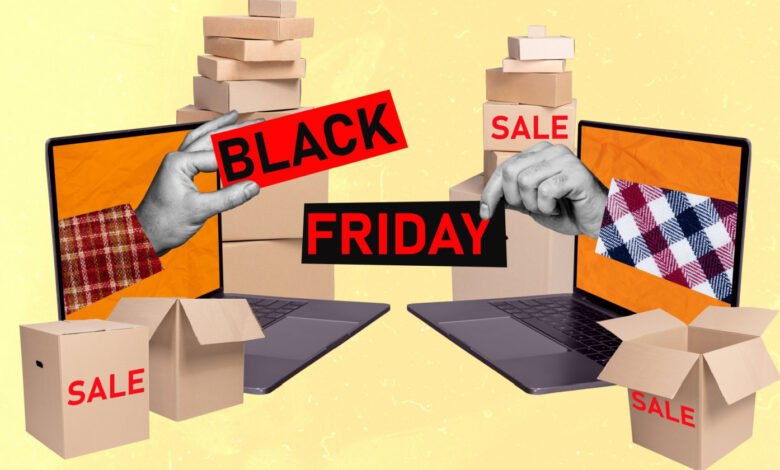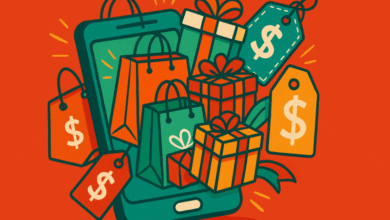2025 Black Friday: Master Winning Strategies From Last Year

▼ Summary
– Black Friday 2024 set historic sales records with U.S. online spending reaching $10.8 billion and global sales hitting $74.4 billion in 24 hours.
– Mobile-first shopping dominated, accounting for 69% of global Black Friday spending and requiring brands to optimize all digital touchpoints for mobile devices.
– Social video and live commerce became key drivers of traffic and conversion, with brands using shoppable videos, influencer partnerships, and interactive features to engage audiences.
– Major retailers like Amazon, Walmart, and Target employed creative campaigns focusing on storytelling, entertainment, and transparency to differentiate themselves and drive sales.
– For 2025, brands must start promotions early, emphasize mobile and social experiences, leverage AI and influencers, and focus on genuine value to appeal to cautious, value-driven consumers.
The 2025 Black Friday season is fast approaching, and brands aiming for success must draw heavily from the transformative trends and record-breaking performance of the previous year. Last year’s holiday shopping period shattered expectations, establishing new benchmarks in online sales, cementing mobile commerce as the dominant channel, and showcasing how creative storytelling can capture consumer attention. With the National Retail Federation projecting continued growth, albeit at a more moderate pace, understanding the shifts in consumer behavior and the winning strategies of retail giants provides a crucial blueprint for crafting effective campaigns.
Last year’s Black Friday was a historic event for retail. Online spending in the United States reached an impressive $10.8 billion, a 10.2% jump from the year before. Globally, a staggering $74.4 billion was spent in a single day. Cyber Monday continued the momentum, generating $13.3 billion in online sales and pushing the total for the entire Cyber Week to a monumental $241.4 billion. This expansion was fueled by evolving shopper habits, longer promotional periods, and enhanced digital storefronts. However, a note of consumer caution suggests that while 2025 will see growth, it may be more restrained than the previous boom cycle.
Key statistics from 2024 reveal important patterns. Nearly 87.3 million American consumers shopped online on Black Friday, while 81.7 million visited physical stores, demonstrating that brick-and-mortar retail remains relevant. Mobile commerce accounted for a dominant 69% of global Black Friday spending, underscoring its central role. The use of Buy Now, Pay Later services also surged, with spending hitting $686 million on Black Friday alone and climbing nearly 9% for the entire season.
Several major trends are defining the current retail era. The shift to mobile-first shopping is absolute, requiring brands to ensure every digital interaction is seamless on a smartphone. Social video and live commerce have also become powerful engines for traffic and sales. Short-form, vertical videos on platforms like TikTok, Instagram Reels, and YouTube Shorts proved exceptionally effective at engaging audiences. Successful tactics included integrating direct shopping links into videos, using interactive features like polls, and partnering with influencers to host live shopping events that create authenticity and urgency.
Another significant change is the expansion of the holiday shopping timeline. It’s no longer confined to a single day. In 2024, almost two-thirds of consumers began their holiday shopping before Black Friday, with many starting as early as the summer. This means brands must launch their campaigns earlier and maintain engagement throughout the entire season to capture this spread-out demand.
Consumer behavior is also evolving. Despite increased spending, economic concerns are making shoppers more deliberate. They are hunting for genuine value, focusing on big-ticket items when deep discounts are available, and increasingly relying on flexible payment plans. While most consumers plan to spend the same or more in 2025, growth is shifting toward categories like electronics and toys, with apparel seeing a slowdown. Notably, there is a generational divide, with Gen Z likely to be more budget-conscious than Millennials, Gen X, and Boomers.
The campaigns from leading retailers offer a masterclass in modern marketing. Amazon moved beyond pure price messaging with its “5-Star Theatre” campaign, using dramatic storytelling to highlight product discovery and customer reviews. They extended their promotions over twelve days and saw more than half of their holiday sales come from independent sellers, all while heavily investing in AI shopping assistants.
Walmart turned deal-seeking into entertainment with its “Deals of Desire” mini-series. This campaign used a soap-opera style narrative and celebrity partnerships to create a memorable experience that drove both online and in-store traffic. The retailer also utilized AI for surprise deal drops and successfully attracted higher-income shoppers through its marketplace.
Target took a different approach, championing simplicity and clarity. Its “Black Friday Deals” campaign cut through the noise with straightforward, bold offers. By leveraging its reputation for curated products and a strong omnichannel presence, along with exclusive items to drive traffic, Target achieved a significant 17% increase in store visits.
For brands planning their 2025 approach, a tactical playbook is essential. Launching promotional teasers as early as October helps build anticipation. Countdown timers and flash deals can create urgency, while extending offers into Cyber Week captures value-driven shoppers. A mobile-optimized experience is non-negotiable, with social platforms serving as the primary stage for shoppable video content. Interactive tools like live streams and quizzes keep audiences engaged.
Influencer marketing and user-generated content remain vital for building authenticity and trust. Collaborating with a range of creators provides credible storytelling, while encouraging customers to share their own experiences generates powerful social proof. Leveraging artificial intelligence through personalized recommendations and targeted messaging can create unique shopping journeys that boost conversion rates. Finally, with economic pressures in mind, brands must emphasize transparent value, focus on high-performing categories, and prominently feature flexible payment options like BNPL.
Looking ahead, the 2025 Black Friday is expected to see steady sales growth, driven largely by mobile and social commerce. Value-conscious shopping will be the prevailing sentiment, and consumers will continue to spread their purchases over a longer period. The most successful brands will be those that start their planning early, commit to a mobile-first and socially-driven strategy, and build authentic campaigns that resonate in a crowded marketplace.
(Source: Search Engine Journal)





